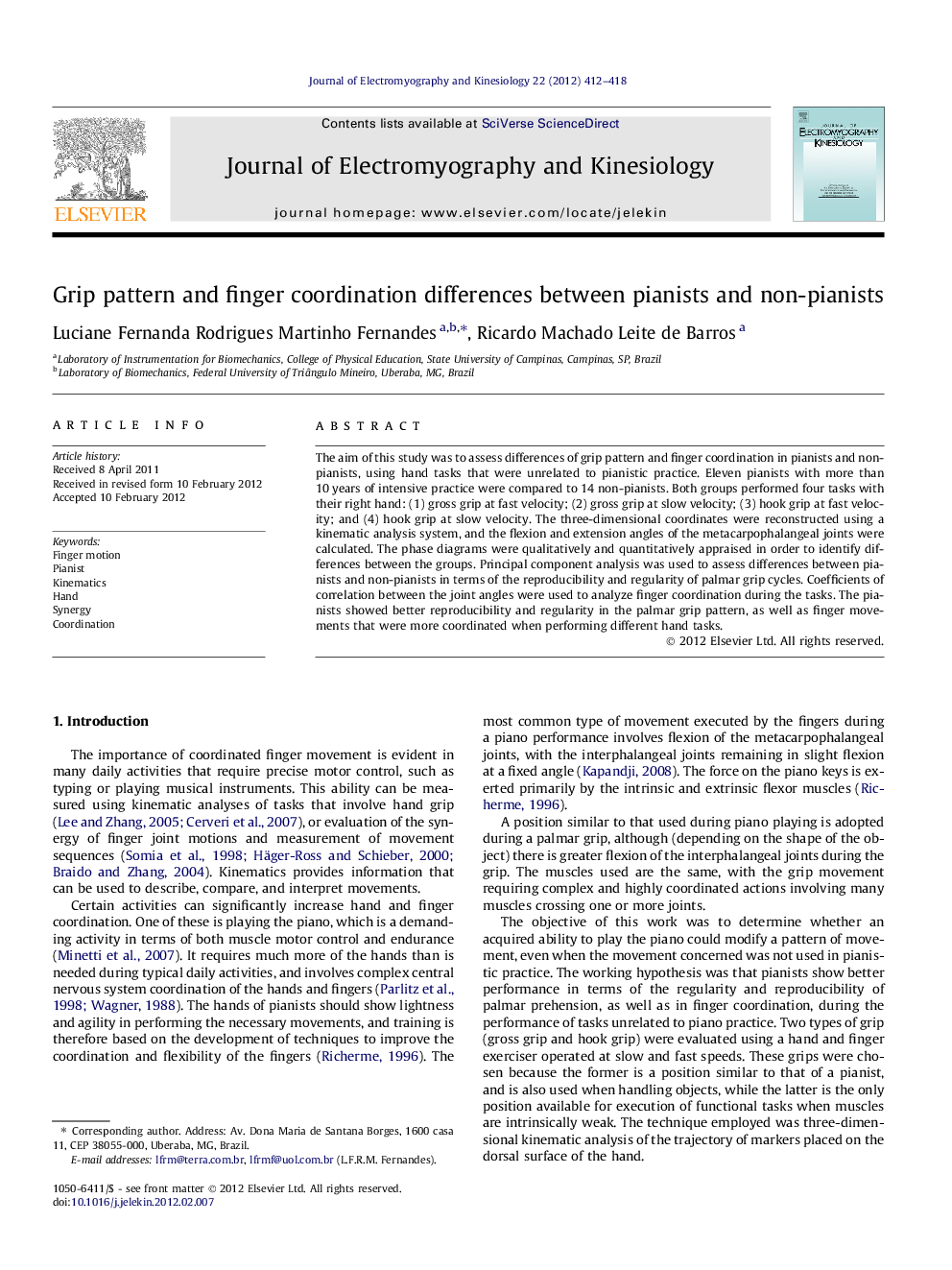| Article ID | Journal | Published Year | Pages | File Type |
|---|---|---|---|---|
| 6210647 | Journal of Electromyography and Kinesiology | 2012 | 7 Pages |
The aim of this study was to assess differences of grip pattern and finger coordination in pianists and non-pianists, using hand tasks that were unrelated to pianistic practice. Eleven pianists with more than 10Â years of intensive practice were compared to 14 non-pianists. Both groups performed four tasks with their right hand: (1) gross grip at fast velocity; (2) gross grip at slow velocity; (3) hook grip at fast velocity; and (4) hook grip at slow velocity. The three-dimensional coordinates were reconstructed using a kinematic analysis system, and the flexion and extension angles of the metacarpophalangeal joints were calculated. The phase diagrams were qualitatively and quantitatively appraised in order to identify differences between the groups. Principal component analysis was used to assess differences between pianists and non-pianists in terms of the reproducibility and regularity of palmar grip cycles. Coefficients of correlation between the joint angles were used to analyze finger coordination during the tasks. The pianists showed better reproducibility and regularity in the palmar grip pattern, as well as finger movements that were more coordinated when performing different hand tasks.
